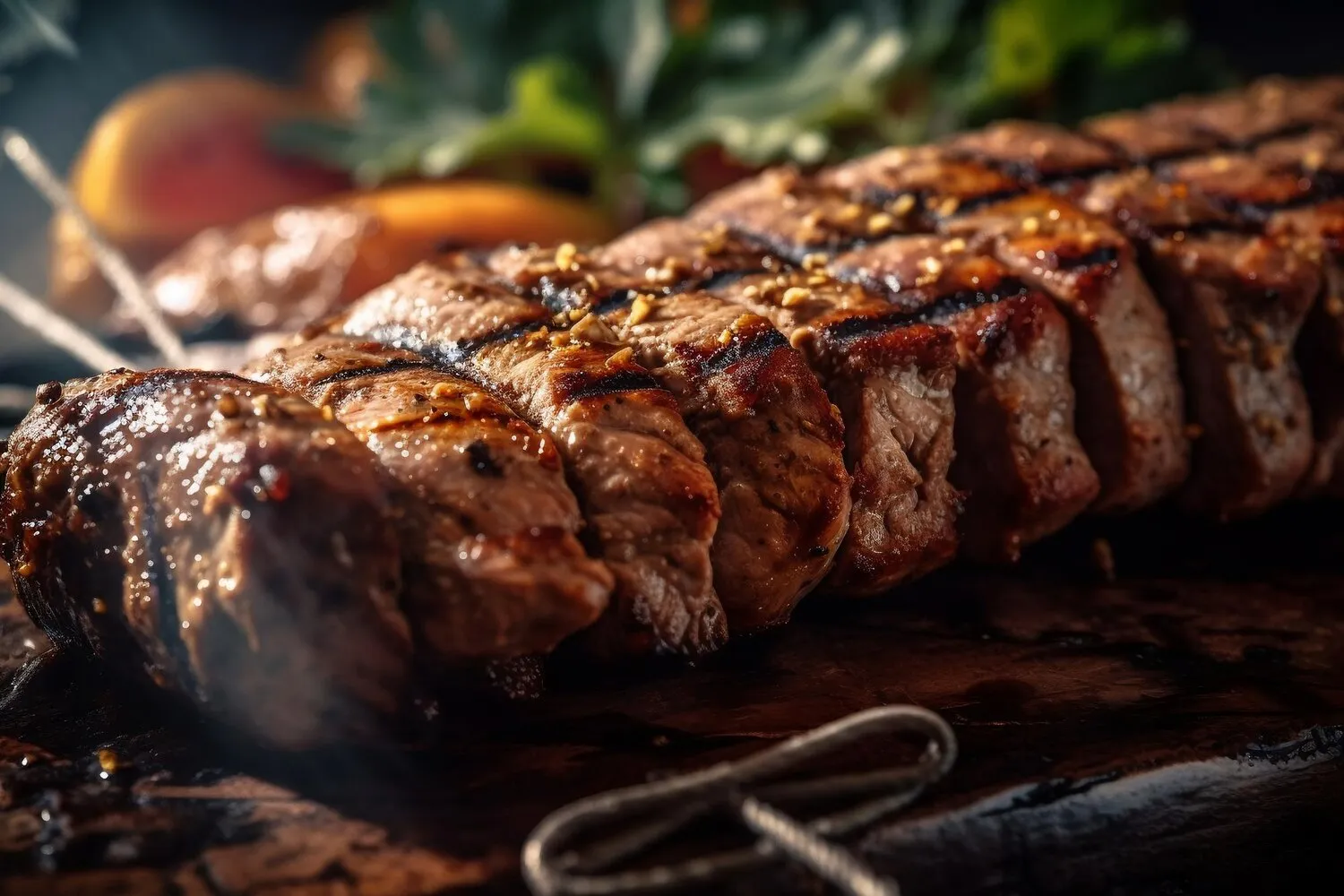
Grilled Meat
Grilled local meat, like beef or lamb.
Nutrition Facts
* The % Daily Value (DV) tells you how much a nutrient in a serving of food contributes to a daily diet. 2,000 calories a day is used for general nutrition advice.
Grilling meat over an open fire is one of the oldest forms of cooking, predating recorded history. From roasting large game by prehistoric humans to the sophisticated barbecue traditions of various cultures, the fundamental concept has remained consistent: applying heat to meat to enhance flavor and digestibility.
Grilled meat is a central element in many cultures worldwide, often associated with celebrations, communal gatherings, and hospitality. It symbolizes abundance and sharing.
Barbecues and Asados
In the United States and South America (particularly Argentina and Uruguay), barbecues (BBQs) and asados are deeply ingrained cultural traditions, often involving large gatherings of family and friends centered around grilled meat. These events are social occasions emphasizing community and shared enjoyment.
Braais in South Africa
South African braais are similar to barbecues but hold a more significant cultural importance. They often celebrate heritage and national unity, featuring a variety of grilled meats like boerewors (sausage) and sosaties (kebabs).
Kebab Traditions
Across the Middle East and parts of Asia, various kebab traditions involve grilling marinated meats (lamb, chicken, beef) on skewers. These are often served with rice, bread, and vegetables and are a staple food enjoyed in social settings.
The flavors of grilled meat are defined by the Maillard reaction, the type of meat used, the seasonings applied, and the grilling technique itself. A smoky, savory, and slightly charred taste profile is characteristic.
The primary flavors come from the Maillard reaction, which occurs when amino acids and reducing sugars are heated. This creates hundreds of flavor compounds, resulting in a complex and savory taste. The type of meat significantly impacts the flavor – beef provides a rich, robust flavor, while lamb offers a gamier, more distinctive taste. Seasonings like salt, pepper, garlic, herbs (rosemary, thyme), and spices (paprika, cumin) are commonly used to enhance the natural flavors. Marinades, often containing acids like vinegar or citrus juice, can tenderize the meat and impart additional flavor. The grilling process itself, including the type of fuel used (wood, charcoal, gas), also contributes to the final flavor profile, adding smokiness and char.
Meat Selection and Preparation
Choose cuts of meat appropriate for grilling (e.g., steaks, chops, skewers). Marinating can tenderize tougher cuts and add flavor. Allow the meat to come to room temperature before grilling for more even cooking.
Grilling Technique
Preheat the grill to the correct temperature (high for searing, medium for cooking through). Oil the grates to prevent sticking. Avoid overcrowding the grill, which can lower the temperature. Use a meat thermometer to ensure the meat reaches the desired internal temperature.
Resting the Meat
Allow the grilled meat to rest for 5-10 minutes before slicing. This allows the juices to redistribute, resulting in a more tender and flavorful result.
Explore additional Grilled meat dishes and restaurants
Explore Grilled meatDiscover top dining spots and culinary experiences in Pescara.
Explore PescaraLearn more about the food culture, restaurant scene, and culinary heritage of Italy.
Explore Italy
